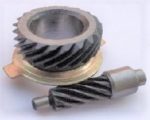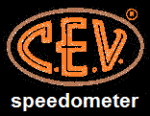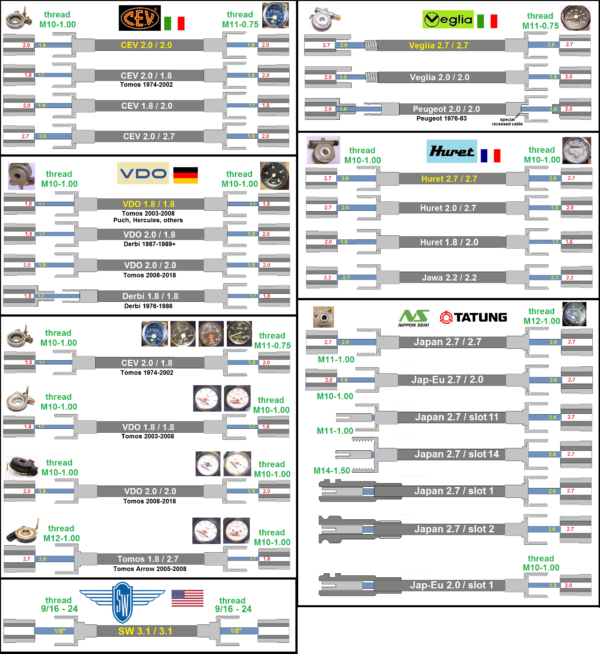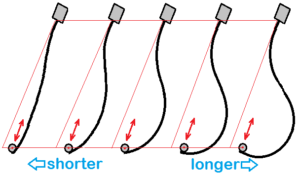Select:
 Service
Service
..Info
Speedometers on vintage mopeds are all mechanical type, not electronic. A driver or sender on the front wheel rotates the cable. The cable, with a spinning wire inside, goes up to the speedometer head. Inside the gauge a spinning magnet moves the needle. An odometer or mileage meter is also driven by the cable, with gears.
Speedo families are heads, cables and drivers that have certain things in common. The head and driver threads are the same. The head and driver square cable holes are the same. So heads, cables and drivers within the same family all interchange.
Square cable holes are a little bigger than square cable ends. A 2.0mm hole takes a 1.85 to 1.95mm cable, and a 2.75mm hole takes a 2.55 to 2.70mm cable. This is a source of confusion.
Speedo drivers: On the front wheel is small gear box that changes the wheel rotation into the cable rotation.

Speedo driver Side means what side of the front wheel would make the driver rotate the cable clockwise, viewed from above. Reversing the side by flipping the front wheel reverses the speedo cable rotation.
Speedo driver Type: Most drivers have the cable exiting below the axle. Most left side drivers are type d because they look like a letter “d”. Most right side ones are type b because they resemble letter “b”. But some type d’s are for right side, and some type b’s are for left. This is because the worm gear teeth can be wound left or right, like a left or right hand thread bolt.
Speedo driver Ratio means how many times the cable rotates for each wheel rotation. Larger diameter tires require higher driver ratios to achieve the same cable rotation. Smaller tires require lower ratios. The gear ratio is related to the angle of the gear teeth as well as the tooth counts.
Speedo cables can be different lengths for the same bike. Aiming the speedo driver more upward requires a shorter cable. Aiming the driver more downward requires a longer cable. When the front suspension goes over bumps, the speedo cable has to flex up and down. Aiming the driver 90 degrees to the suspension travel makes the least stress on the cable and the least interference with the suspension movement. Most newer bikes are that way. But then the cable hangs out a lot, and requires a fender eyelet to help prevent the long cable from getting snagged on things when parking or maneuvering.






